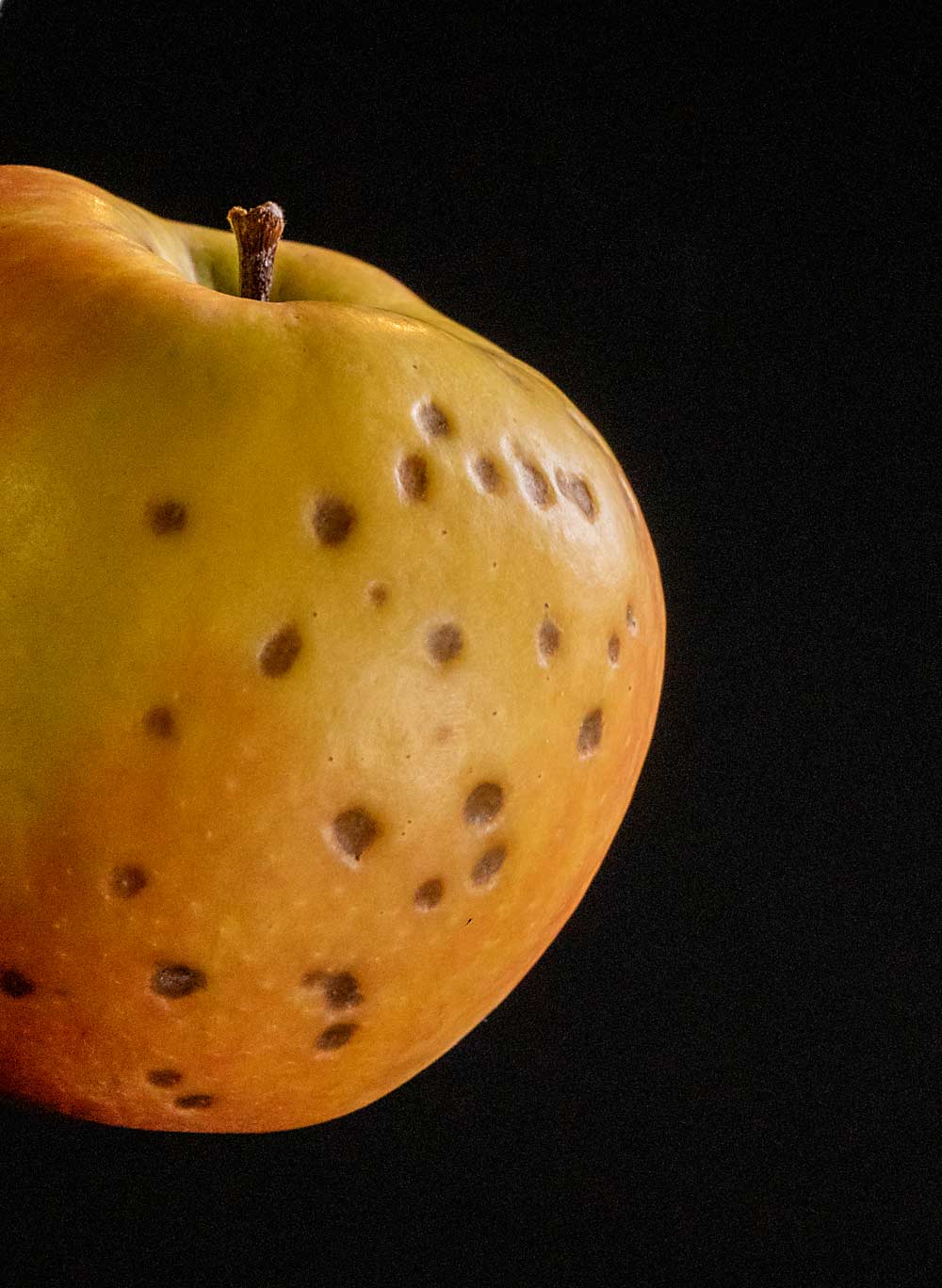Bitter pit is a worldwide problem. Every country with an apple industry has experienced the disorder at some level. And though scientists have been studying bitter pit for at least 150 years — and more research has been done on bitter pit than any other apple disorder except scald — they still don’t know exactly what causes it and have yet to find a foolproof way to manage it.
Randy Beaudry, a professor and postharvest expert at Michigan State University, talked about the history of bitter pit during the International Fruit Tree Association’s Grand Rapids conference in February, in a presentation titled “150 Years of Failed Progress in Bitter Pit Management.”

As part of his own research, Beaudry dug into the historical literature on bitter pit. The first description he found was published in 1869, where it was called “speckling.” Since that first mention, thousands of studies have been performed, manuscripts published and recommendations created to understand and control bitter pit. However, in all that time, no one has achieved a complete understanding of the disorder or devised a completely effective means of control, he said.
That doesn’t mean the cause is hopeless. Researchers around the world are making new discoveries about the disorder and seem to be moving closer to a more complete understanding of what causes it and how to stop it. Beaudry himself plans to spend more time studying the disorder, he said.
That wasn’t necessary three decades ago, when Beaudry began his postharvest career with MSU. Bitter pit was not a major problem back then. But along came Honeycrisp and other susceptible varieties, and the disorder started showing up more frequently in Michigan storages.
Part of what makes bitter pit so difficult is that it is hard to predict; its intensity varies from year to year, from block to block and from variety to variety. And, symptoms don’t always become obvious until the apples emerge from storage.

“I can’t think of a more disappointing experience for a grower than to put good-looking fruit away and have it come back with a disorder,” Beaudry said.
Another mystery is when the bitter pit process actually starts. For four to six weeks after bloom, a tree’s xylem begins to transfer water and calcium to its fruit. Sometime later in development, xylem vessels in the fruit are disrupted, preventing the fruit from receiving water and calcium. A lacuna, or pit, forms on the fruit at this time, and the calcium in the surrounding tissue gets sucked into the pit, such that the calcium in the pits can end up about four times higher than in surrounding tissue. At this point, cells start to expire and brown, Beaudry said.
“Bitter pit is often described as a calcium deficiency disorder, but it’s actually a calcium deficiency-related disorder,” he said. “Really, it’s about the metabolism and movement of calcium.”
Researchers have no idea why one cluster of cells is somehow sensitized to develop a pit while the surrounding tissue is quite healthy, Beaudry said.
“We still don’t know the relationship between the environment and bitter pit in a really precise way,” he said. •
—by Matt Milkovich
Related:
—Precision vision on 2020 IFTA Michigan tour
—Growing from there to here






Leave A Comment